June Tree of the Month: Hazel - plus, Ancient Woodland between the Coquet and the Wansbeck.
Saturday, 31 May 2025
The Woodland Trust tells us that we now only have Ancient Woodland covering 2.5% of the UK. (609.990 hectares).
Yet here in our area of Northumberland, Max Adams explained to us, that there might be more of these precious woodlands than was previously thought.
He titled his talk Cocwudu - a word he is using to mean 'The Woodland of Coquetdale' (he said Cocwudu was the original name for the River Coquet).
What actually IS Ancient Woodland?
Woodland Trust:
"Ancient woods are areas of woodland that have persisted since 1600 in England, Wales and Northern Ireland, and 1750 in Scotland. This is when maps started to be reasonably accurate so we can tell that these areas have had tree cover for hundreds of years. They are relatively undisturbed by human development. As a result, they are unique and complex communities of plants, fungi, insects and other microorganisms."
During Max's illustrated talk, a knowledgeable participant pointed out that as well as using maps, examination of the soil in a woodland would reveal the age. While agreeing, this method would be time-consuming and expensive, Max observed.
Types of Ancient Woodland
What was fascinating in Max's talk was how he explained, by showing layering of maps, where ancient woodland near our areas can be found.
Using the 1850s Ordinance Survey Maps, and much older maps, Max pointed out that woodland with 'squiggly edges' could well be considered ancient semi natural woods. Those with square or rectangular edges were more likely to be plantations on ancient woodland sites.
Cocwudu
Looking at the maps, the area between the Coquet and the Wansbeck, Max told us, was the Gospatrick Estate, and included:
Wingates
Ritton
Longhorsely
Stanton
Netherwitton
Longwitton
It was so interesting to note on the maps the areas of - probably - ancient woodland, in these places.
Gospatric, Earl of Northumbria
I must admit I had never heard of this person, or knew that this area was called this. I looked it up and you can find out more here, if you would like to.
The Bernician Studies Group, who explore early medieval Northumbria, have created an interactive map to to view this area of Mid-Northumberlnad, between the river Coquet in the north and the Hart-Wansbeck to the south.
You can access the interactive map from the website. Below is a static map.
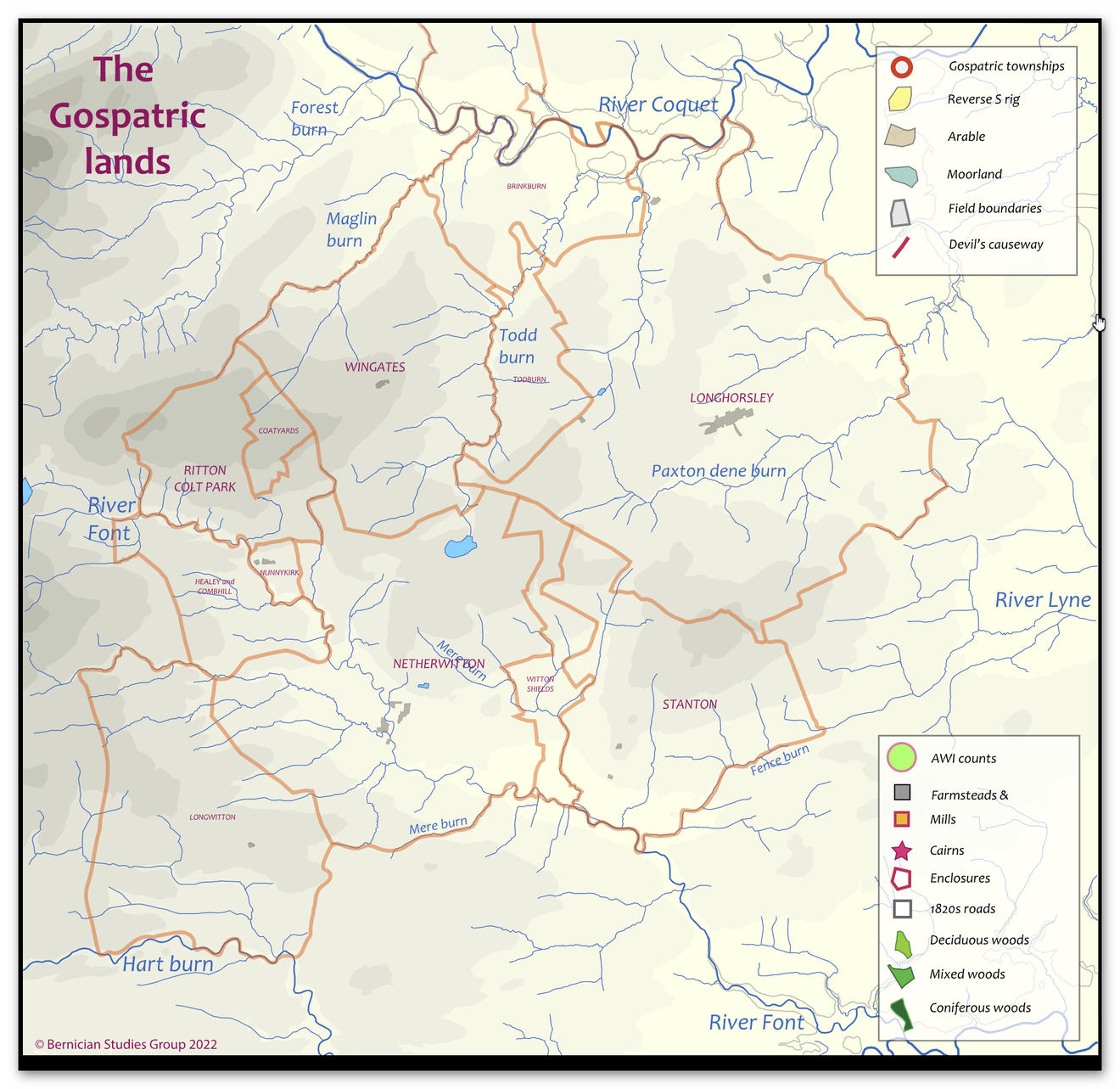
Names as clues
Agreeing with Oliver Rackham, Max explained how certain place names clearly indicated the terrain, including woodland.
Netherwitton, for example, would have meant 'Lower wood, farm/settlement'. Wingates: 'Windy Gap'. Stanton: 'Stone farm/settlement'. Longwitton: 'Long wood farm/settlement'. And so on.
Therefore, by using maps, and place names, Max has been exploring the pockets of ancient woodland between The Wansbeck and The Coquet.
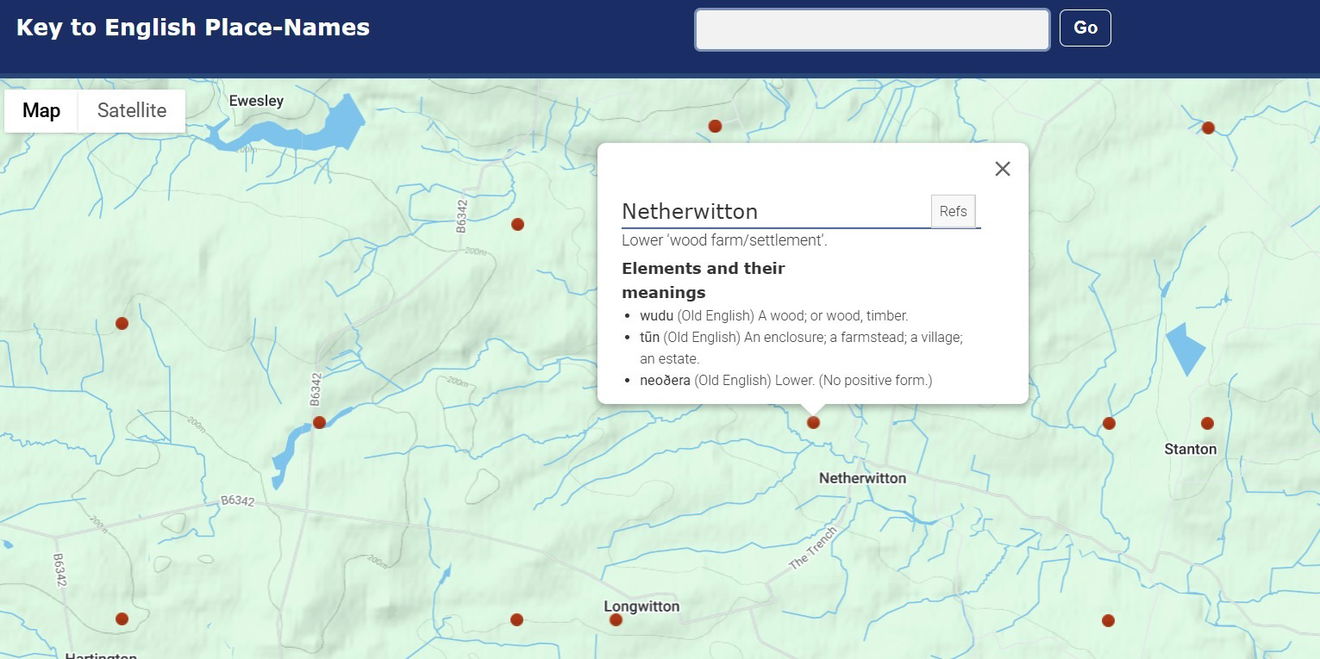
Ancient woodland near Brinkburn
The best part of the day was the trip out to walk in the woods. We were so fortunate that the weather was mild, and the sky was blue and virtually cloudless.
Max pointed out the wild flowers, which can also be indicative of whether or not a woodland is 'ancient'.

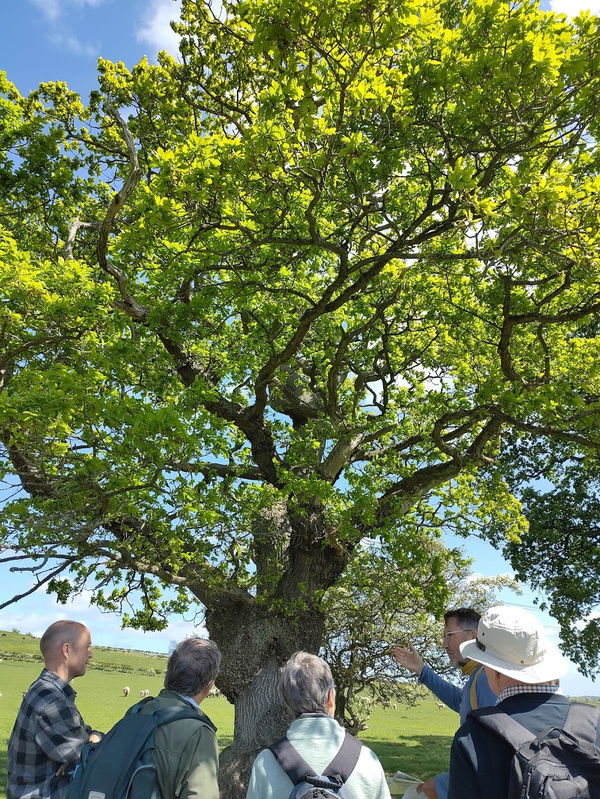
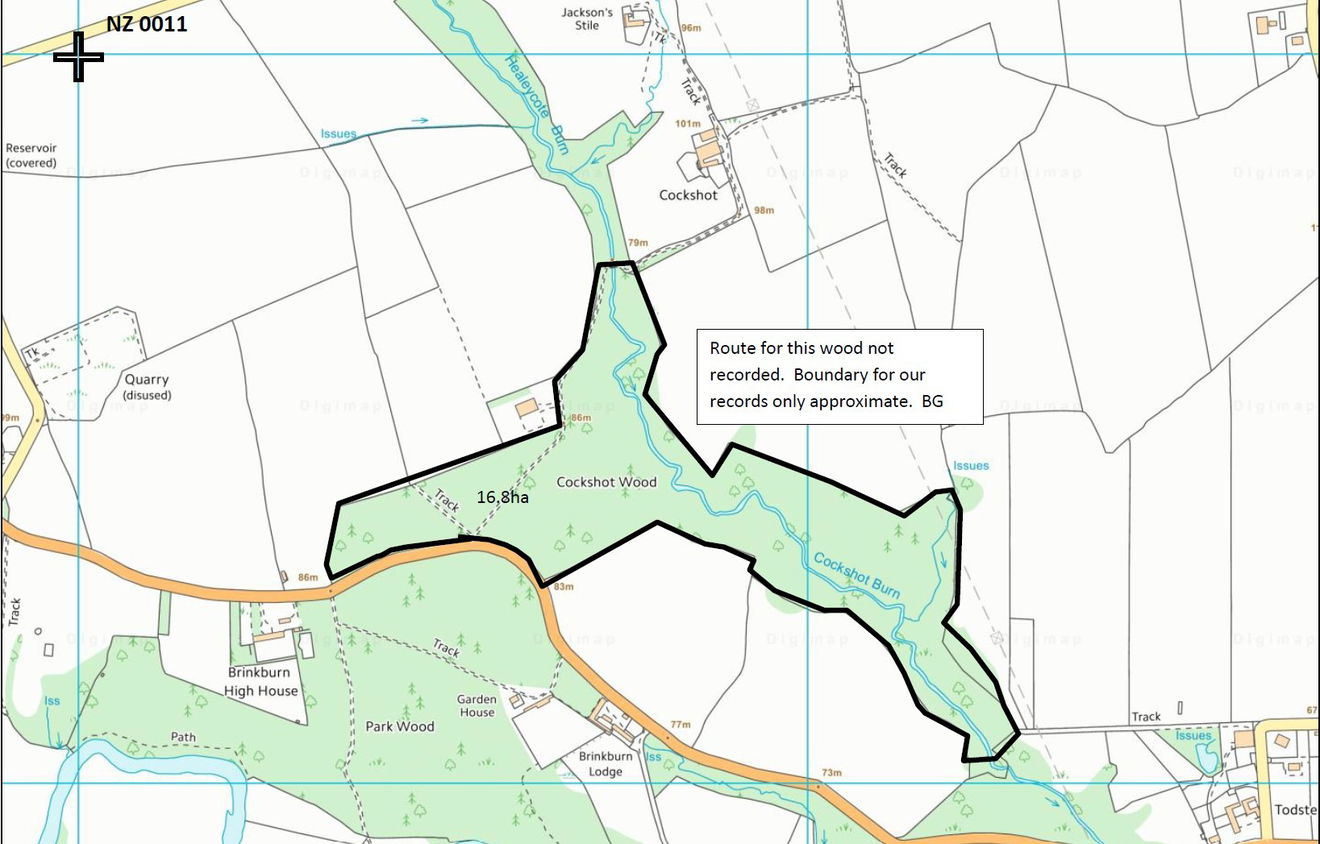
It was Cockshot Wood (probably home to woodcocks?) which we visited. Within this wood are many ancient woodland indicators.
Very exciting for Rothbury Tree Wardens, is also the white area in front of the wood. This is going to be the area we will be helping to develop a Community Orchard, and, hopefully, helping native trees to regenerate naturally from the woodland surrounding it. This has been impossible up until now, as sheep have been kept in these fields.
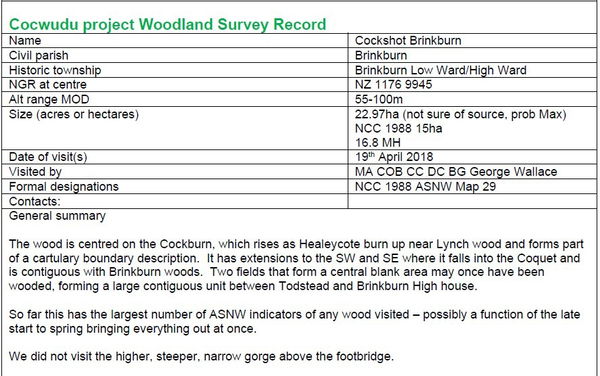


Above is the woodland survey record.
Hazel: Tree of the Month
Those of us who have been growing trees from seeds for the Living Woods Project: Seeds2Trees, have had first hand experience of growing Hazel.
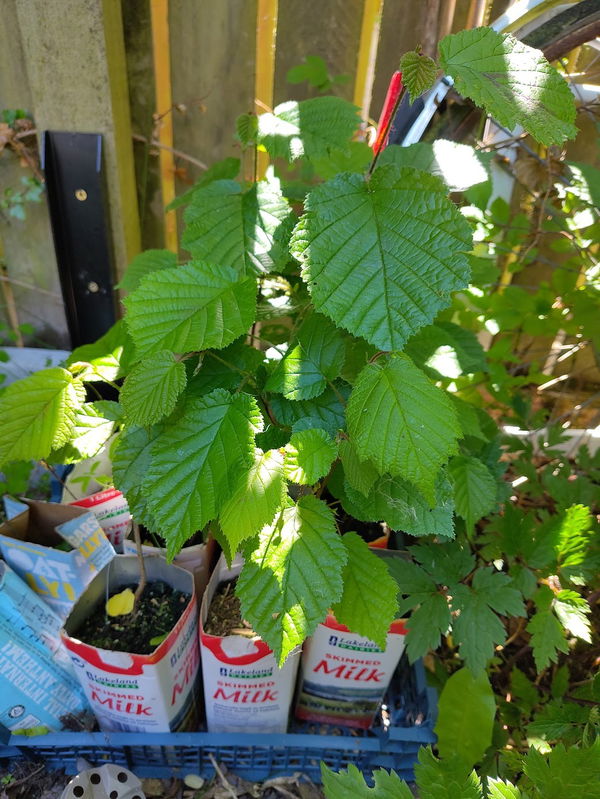
These are some of 'mine' after growing from seed 18 months ago. They will soon be ready to hand back, and be planted out.
As you can see, the leaves are hairy, toothed, and pointy at the tip.
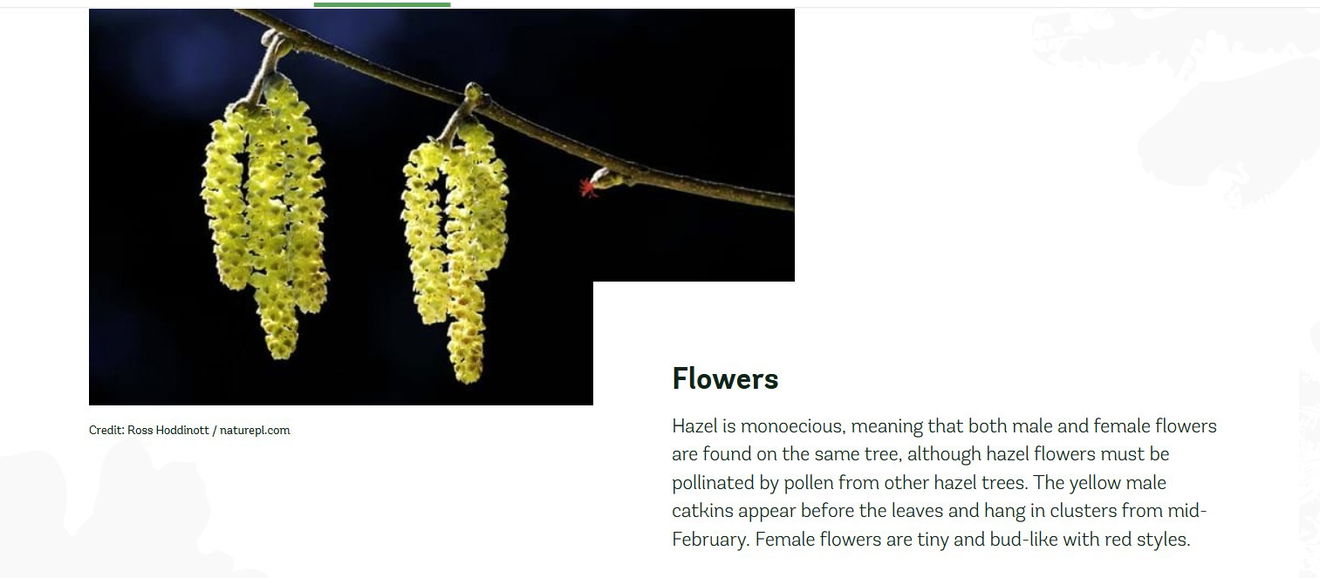
Woodland Trust information on Hazel Flowers (above).
In Max Adam's book 'The Wisdom of Trees' he says
'The hazel... (is) barely a tree at all when compared to the canopy giants like oak, beech and chesnut'.
He tells us that the tallest British Hazel is only 26 ft tall, and lives in Herefordshire.
But, as Max points out, Hazel has been a true partner in human cultural evolution. Hazel has been used to make 'divining rods, baskets, hurdles, withies from roofs, barrel hoops and hedging stakes'. He tells us that one very special aspect of Hazel is her ability to self-coppice. She regularly sends ' up new, straight, vigorous shoots from the base of the trunk so that sometimes it is hard to tell if it has been coppiced by humans or not'.
In our walk in the woods, we found many hazel, and they were, indeed, coppiced. Definitely by themselves.
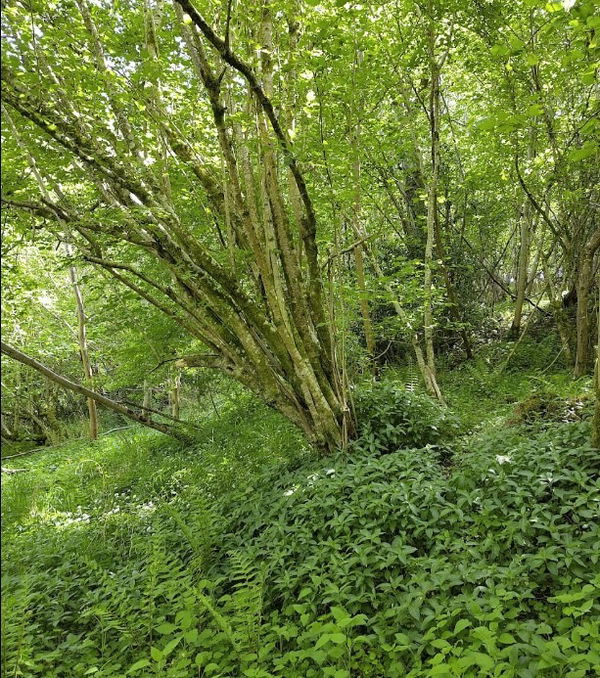
We are all looking forward very much to returning to these woods, and to helping develop the fields, for the benefit of nature, biodiversity, and community.
Would you like to join Rothbury Tree Wardens volunteering at 'Tod's Place'?
Living Woods has begun a fabulous project, transforming a pasture field into a community orchard, and native woodland. Growing trees from the Ancient Woodland which surrounds the field. They are naming the area Tod's Place, in recognition of previous names, and celebrating the name Tod, which means, a male fox. (Of course, I would prefer a name that referenced both sexes! But I can see the logic).
Why not sign up as a volunteer
